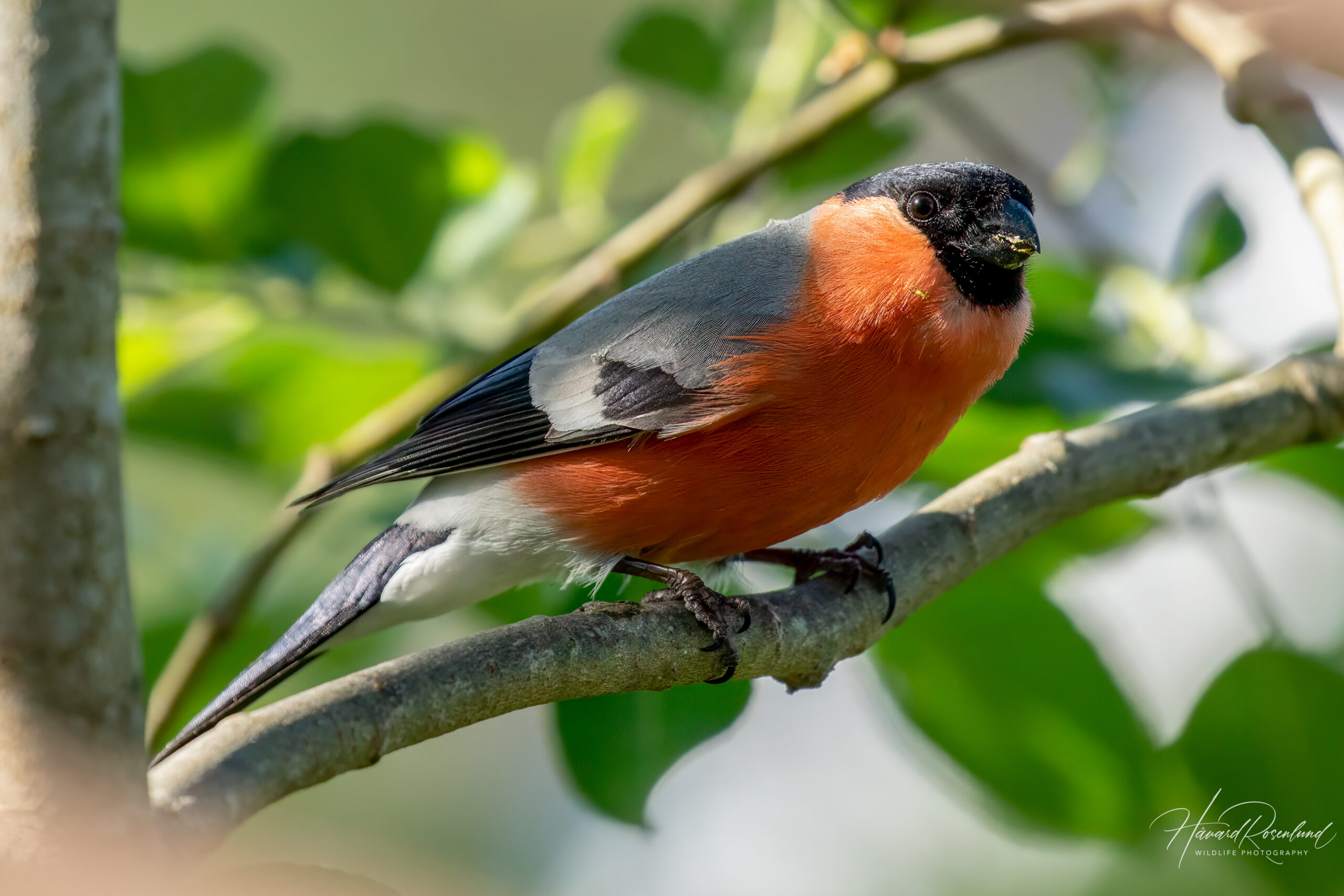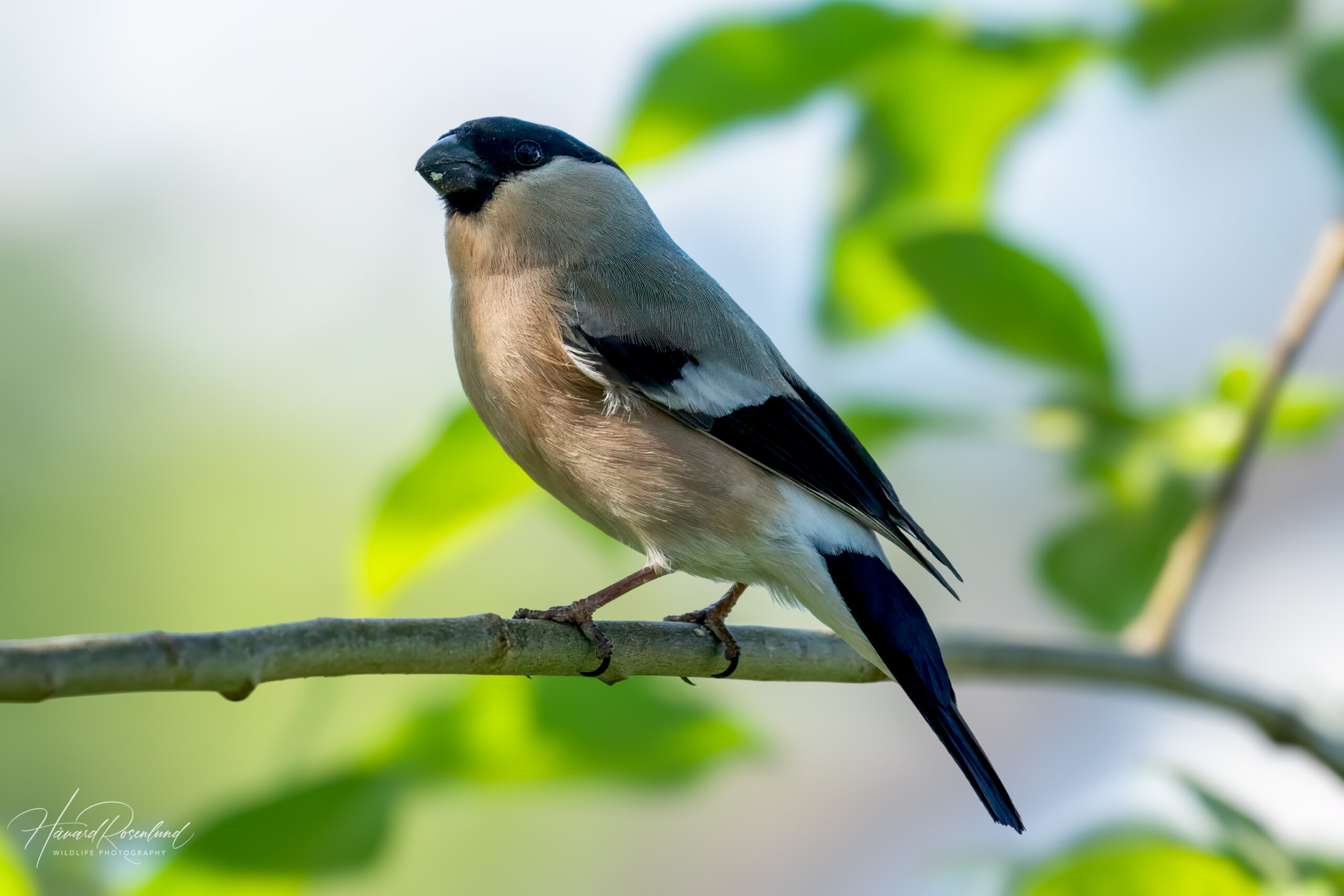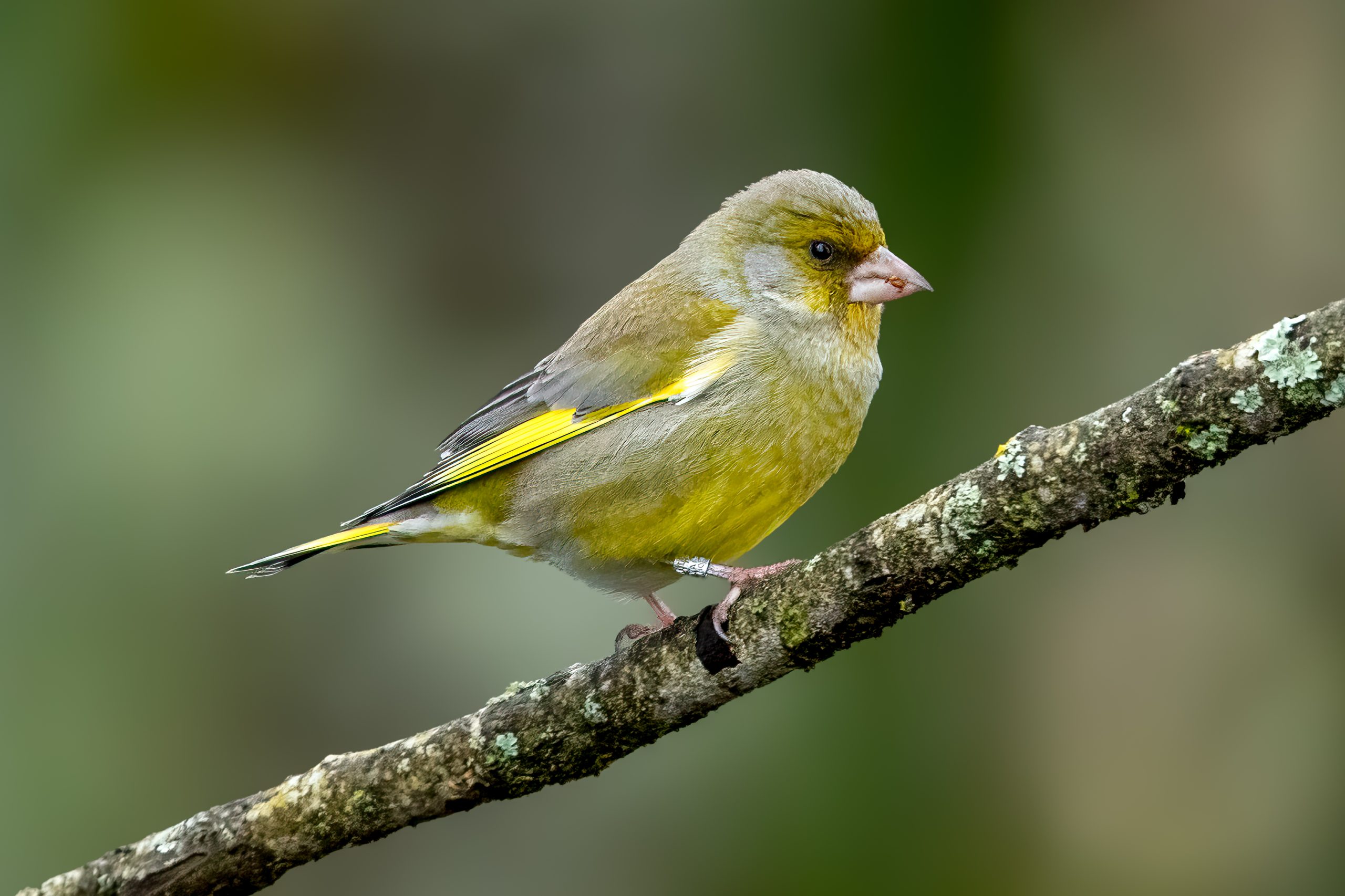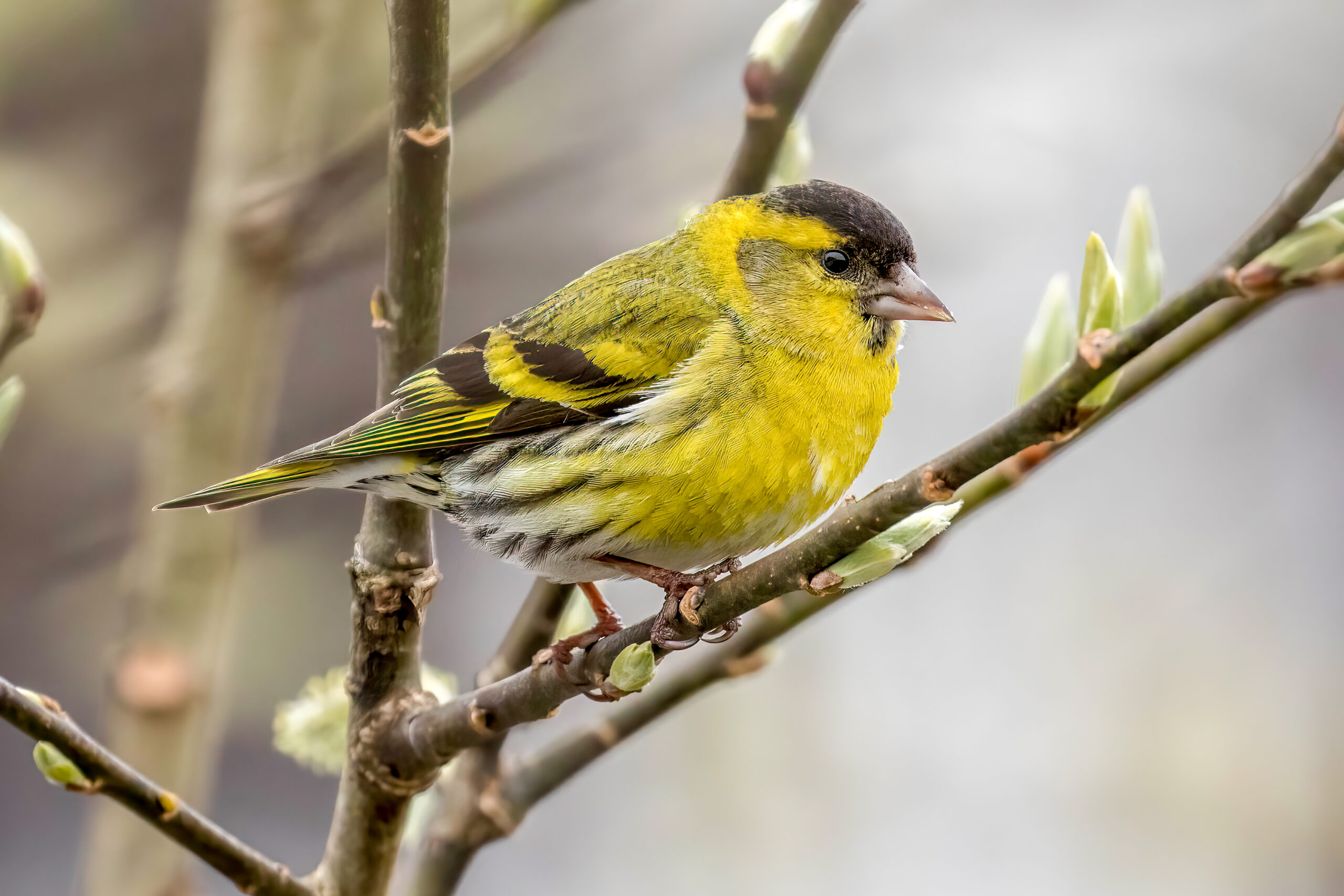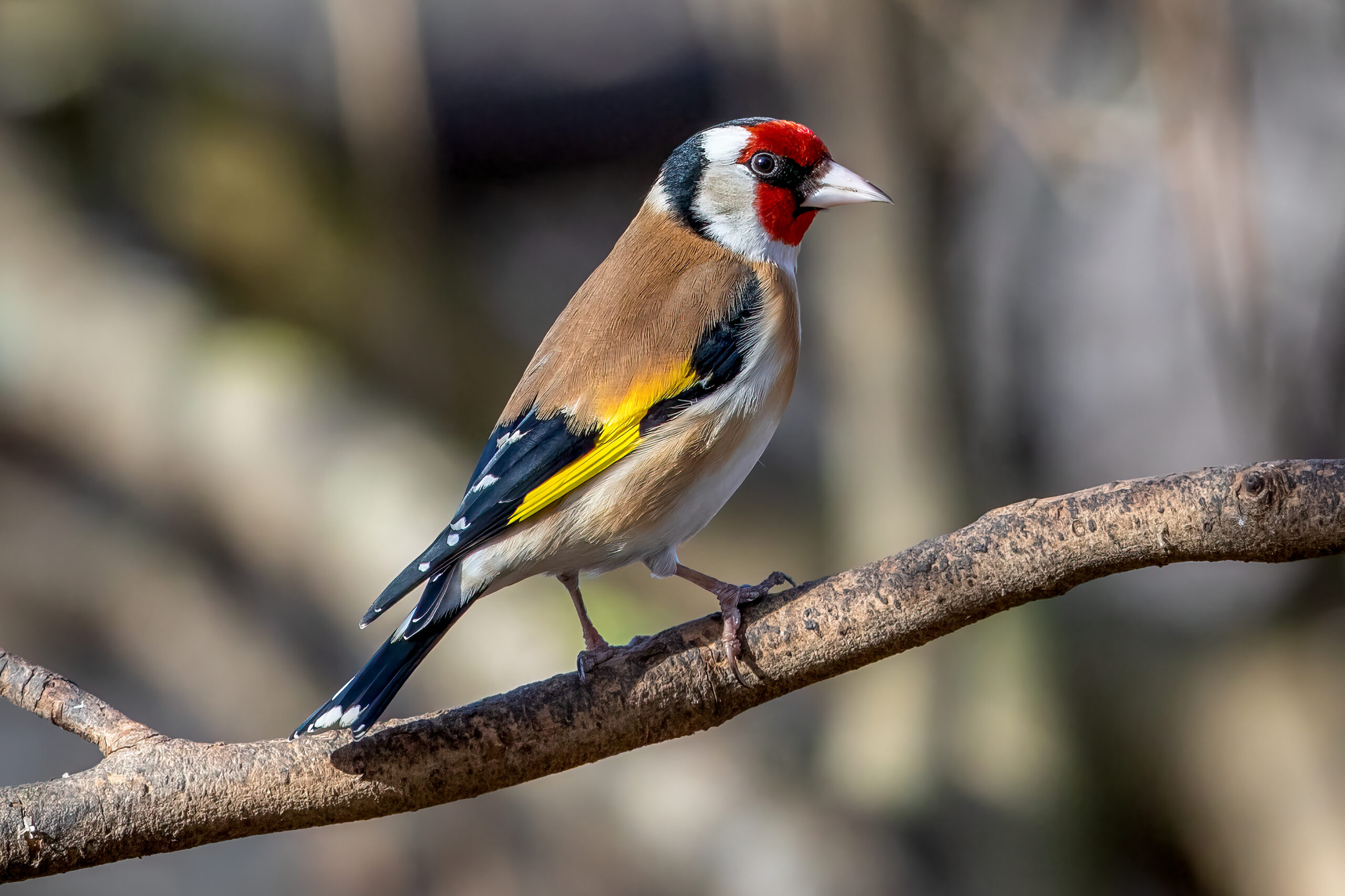Eurasian Bullfinch
(Pyrrhula pyrrhula)
Description
The Eurasian bullfinch (Pyrrhula pyrrhula) is a small passerine bird with a broad range, extending from Europe across temperate Asia to Japan. It is a finch with a stout, short bill and a distinct black cap. Adults typically measure about 15-17 cm (5.9-6.7 in) in length and weigh around 21-38 grams (0.74-1.34 oz). This species exhibits sexual dimorphism; males are characterized by their striking red underparts, and a blue-grey back, while females and juveniles have more subdued, brownish underparts. The black wings and tail contrast with a white rump, visible during flight. It has a distinctive soft, melancholic call, which is often described as a gentle whistle.
Diet & habitat
Eurasian bullfinches are typically found in deciduous and mixed woodlands, garden areas, hedgerows, and parks. They prefer habitats that provide dense cover, which offers protection from predators and harsh weather conditions. They primarily feed on seeds and buds of various trees and shrubs, with a particular preference for the seeds of ash and elm during winter. In spring and summer, they may also consume small invertebrates to supplement their diet. Their feeding habits can sometimes lead to them being considered pests in orchards due to their tendency to eat fruit tree buds.
Migration
Bullfinches are generally resident birds, but some populations, especially those in the far northern parts of their range, exhibit partial migration. During winter, these northern populations may move southward to escape the colder climates and find food more easily. Migration distances are relatively short compared to other passerines, and these movements usually occur between September and November, returning to their breeding grounds in March and April.





